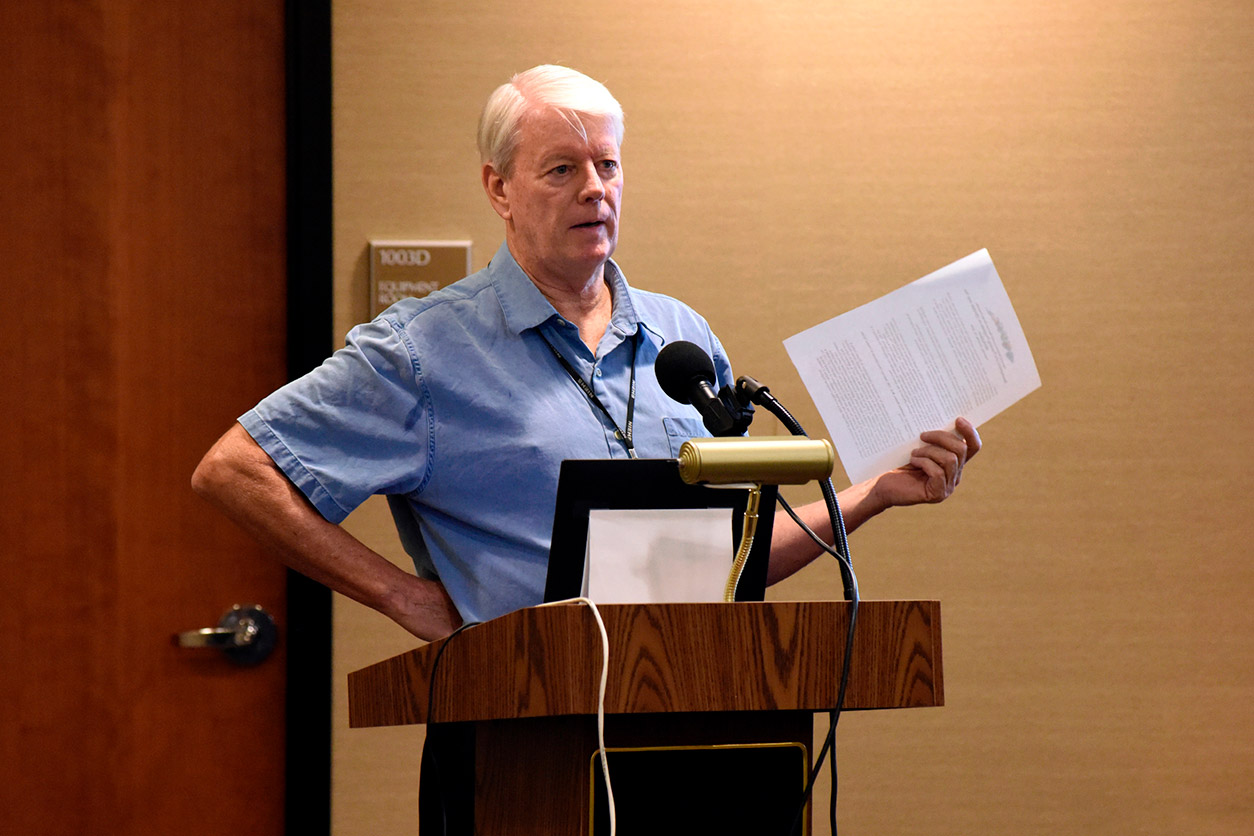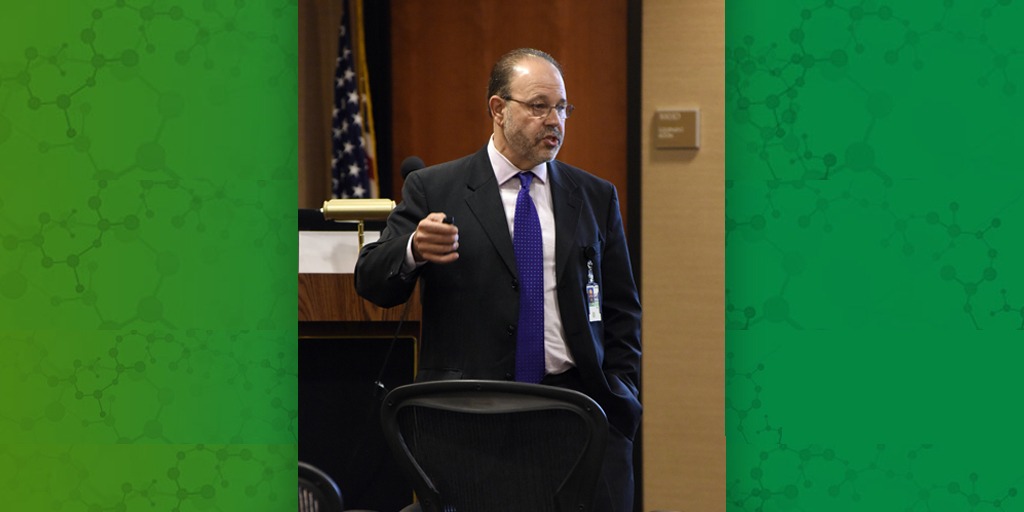The NIEHS Worker Training Program (WTP) has released a course designed to address the immense challenge of opioids in the workplace.
Jonathan Rosen, a consultant for WTP’s National Clearinghouse for Worker Safety and Health Training, led the effort to create the comprehensive program.
He served for 22 years as director of the Occupational Health and Safety Department for the New York State Public Employees Federation. Today, Rosen helps labor unions, government agencies, and other organizations solve occupational safety and industrial hygiene problems.
On Oct. 10, he spoke at NIEHS as part of the Keystone Science Lecture Seminar Series. His talk, “Development of a Training Program on Opioids and the Workplace,” provided details about the initiative.
A new way of thinking
The course includes a leadership component so those in position to change organizational culture learn how occupational hazards and stress can cause pain and prescription or illicit opioid use.
“Our goal was to develop an evidence-based awareness training program that identifies workplace risk factors and solutions for opioid use, misuse, and addiction,” said Rosen.
According to Rosen, the course is designed to accomplish the following.
- Address the impact of the opioid crisis on workers, the workplace, and the community.
- Use the public health model of primary, secondary, and tertiary prevention.
- Define opioid use disorder as a disease that affects the brain.
- Remove stigma.
- Conclude with action planning so that participants will begin outlining next steps.
“When you say the word addiction, [people] think of the person living under the bridge, and they don’t think about the path that got them under the bridge,” said Rosen.
“If we don’t get over the stigma … and [understand this is] a disease, we won’t solve the problem of overcoming the silence and people [not] coming forward for help,” he added.
WTP director Joseph “Chip” Hughes, who introduced Rosen, explained the timeliness of the program.
 Hughes introduced Rosen, who has created several training tools used by WTP grantees and other organizations. (Photo courtesy of Steve McCaw)
Hughes introduced Rosen, who has created several training tools used by WTP grantees and other organizations. (Photo courtesy of Steve McCaw)“Just in the past 12 months, startling and shocking evidence has come to us in terms of the number of overdoses, deaths, and suicides in the workplace, within specific workplace sectors, which we now know are specifically related to opioid use,” he said.
Prevention a key
Rosen pointed out that much workplace-related opioid misuse and addiction stems from opioid prescriptions following injuries on the job. As such, the course emphasizes prevention as a critical tool.
“Prevention starts with making sure the job is not injurious,” Rosen observed. “There are many potential solutions to help ensure that workers are not subject to conditions that will result in pain and injury.”
Rosen also discussed the importance of employers moving from a reactive, punitive approach to a more proactive, supportive approach to dealing with employees with substance use issues.
Course development
Creating the program required identifying stakeholders, reviewing health and safety guidelines, and conducting a literature search, among other things, said Rosen.
He and his team also held a series of listening meetings at workplaces in Connecticut, Massachusetts, New York City, and West Virginia.
Rosen said that going forward, organizations will be encouraged to integrate the 6-hour course into their training programs, tailoring it to the needs of their respective workers.
(Ernie Hood is a contract writer for the NIEHS Office of Communications and Public Liaison.)
Source link
factor.niehs.nih.gov


